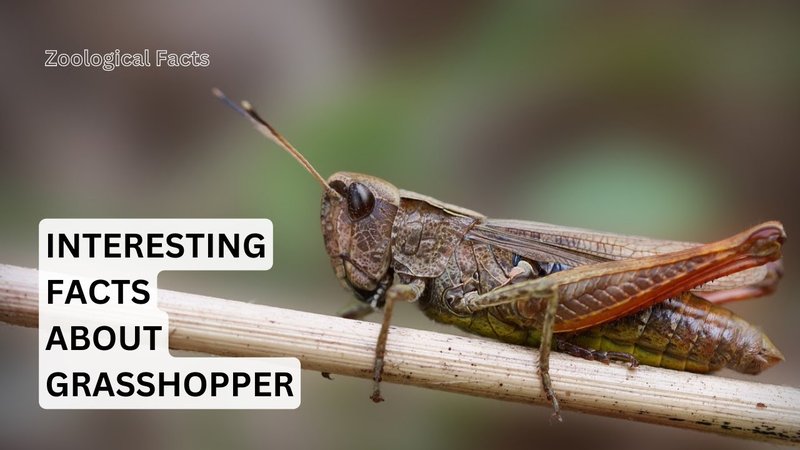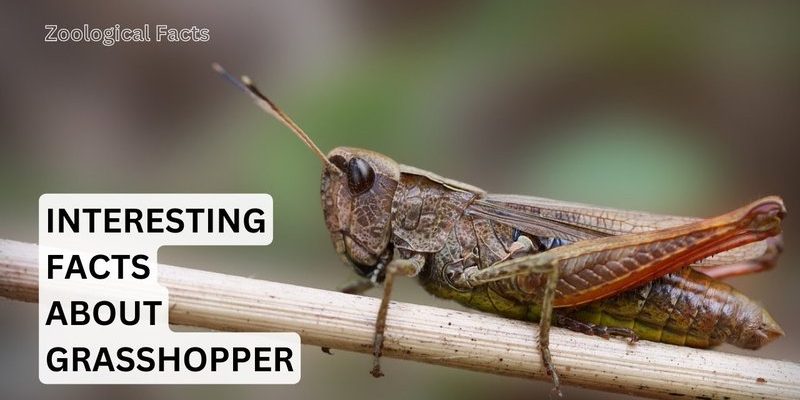
Honestly, grasshoppers are not only interesting for their movements and sounds; they play a vital role in our ecosystem. They’re part of the food chain and help in aerating the soil. Plus, they’re a great example of how insects can be both simple and complex at the same time. So grab your favorite snack, and let’s jump into these fascinating facts about grasshoppers!
1. Grasshoppers Are Expert Hoppers
Grasshoppers, as their name suggests, are well-known for their incredible jumping abilities. They can leap up to 20 times their body length in a single bound! Imagine a human jumping over a tall building—now that’s impressive! This incredible action comes from their strong hind legs, which are built for powerful jumps.
When a grasshopper prepares to leap, it uses its legs like a spring. It crouches down and then pushes off with a tremendous force, launching itself into the air. This isn’t just for fun; it helps grasshoppers escape from predators quickly. So, if you ever see one making a sudden jump, it’s probably trying to avoid becoming someone’s lunch!
2. They Have a Unique Diet
You might be wondering, “What do grasshoppers eat?” These little guys are primarily herbivores, meaning they munch on a variety of plants. Their diet mainly consists of grasses, leaves, and even some flowers. This plant-based diet helps them thrive in their natural habitats, which can range from fields to forests.
You could say grasshoppers are nature’s lawnmowers! They play a significant role in controlling plant growth and spreading seeds. So, while they might seem like a simple snack for birds, they’re actually crucial for maintaining the balance in their ecosystems. Plus, their ability to consume large amounts of foliage helps keep overgrown areas in check.
3. They Are Known for Their Chirping Sounds
If you’ve ever spent a summer evening outside, you likely heard the rhythmic chirping of grasshoppers. Here’s the thing: they don’t chirp like crickets do. Instead, grasshoppers create sound by rubbing their wings together in a process called stridulation. It’s like they’re playing a tiny musical instrument!
Grasshoppers use these sounds for various reasons, including attracting mates and establishing territory. Each species has its own unique song, which can vary in pitch and rhythm. So, the next time you hear a grasshopper’s melody, remember it’s not just background noise but their way of communicating!
4. Grasshoppers Have a Complex Life Cycle
Grasshoppers have a fascinating life cycle that includes three main stages: egg, nymph, and adult. Most people think of them as adults hopping around, but it all starts with tiny eggs laid in the soil. After a few weeks, these eggs hatch into nymphs—young grasshoppers that look like mini versions of adults but lack wings.
As they grow, nymphs undergo several molts, shedding their exoskeletons to make room for their larger bodies. It’s a bit like a superhero shedding a costume to reveal their powers! After around 5-7 molts, they finally become adults, ready to take on the world with their newly developed wings and jumping abilities.
5. They Can Change Color
Did you know that grasshoppers can change color? It’s true! Some species can shift from bright green to brown or even yellow depending on their environment. This nifty trick helps them blend in with their surroundings, making it harder for predators to spot them.
This color change is largely influenced by temperature, light, and the grasshopper’s mood. It’s almost like they have a built-in camouflage system! So, whether they’re hiding among the grass or basking in the sun, their color adaptation is a survival strategy honed over millions of years.
6. Grasshoppers Are Important for Biodiversity
Here’s a surprising fact: grasshoppers are essential players in maintaining biodiversity. They serve as a food source for many animals, from birds to larger insects. When grasshoppers thrive, they help support a healthy ecosystem by allowing other animals to flourish as well.
Moreover, their feeding habits can help shape plant diversity in their habitats. By consuming certain plants, grasshoppers encourage other species to thrive. So, think of them as little gardeners, doing their part to promote a balanced environment where a variety of species can coexist.
7. They Have Compound Eyes
Grasshoppers have some pretty remarkable eyes. Their compound eyes are made up of thousands of tiny lenses, giving them a broad field of vision. This means they can see movement from almost every direction without having to turn their heads, which is crucial for spotting predators.
However, this vision comes with a trade-off. While they excel at detecting movement, they don’t see fine details very well. Still, it’s fascinating how evolution has equipped them with such a useful feature for survival in the wild!
8. Grasshoppers Can Be Found Worldwide
You might think grasshoppers are just common in your backyard, but they actually inhabit various environments across the globe. You can find them everywhere from deserts to grasslands, forests, and even in some urban areas.
Their adaptability is pretty impressive! They thrive in diverse climates, from hot and dry to cool and moist. This ability to spread and flourish in so many places makes them a vital part of many ecosystems around the world.
9. They’re Often Misidentified
Many people confuse grasshoppers with crickets, and while they do share some similarities, they belong to different families. Grasshoppers usually have shorter antennae and are more robust compared to their cricket cousins.
Next time you’re outside and spot a hopping insect, take a closer look! Pay attention to those antennae and body shape. Recognizing the difference between these two creatures can be a fun little challenge. You might find yourself becoming an insect identifier!
10. Grasshoppers Impact Agriculture
While grasshoppers play essential roles in ecosystems, they can also be problematic for agriculture. Large swarms of grasshoppers can devastate crops, leading to significant economic losses for farmers. They’re known to consume a considerable amount of vegetation, which can be quite a challenge for those trying to grow food.
Farmers often need to find a balance between managing grasshopper populations and protecting their crops. This has led to various control methods, from natural predators to insecticides. So, while grasshoppers are fascinating, they also highlight the delicate dance of nature and human agriculture.
In conclusion, grasshoppers might seem simple at first glance, but their world is full of surprises. From their incredible jumping abilities to their roles in ecosystems, these little insects illustrate how interconnected life is. Next time you see a grasshopper, take a moment to appreciate all the unique traits that make them who they are. They’re not just bugs; they’re tiny warriors of nature!

